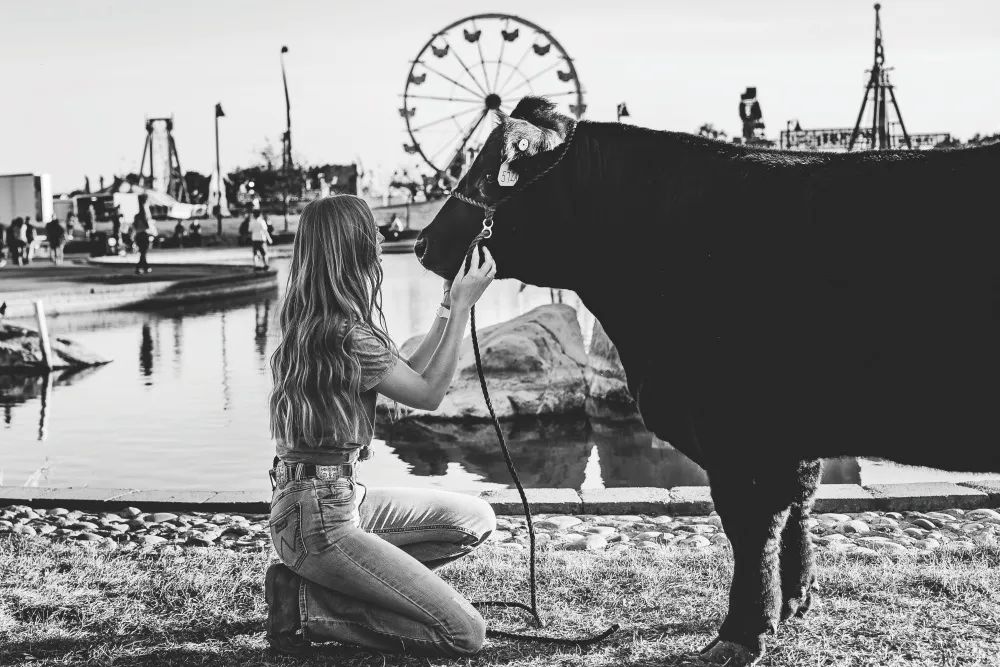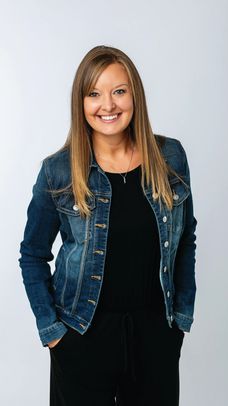
Head, Heart, Hands, and Health in 4-H
July 2023
by Kelly McCandless | photos by Hannah Willson Photography
In a state which boasts agriculture as its #1 industry, most of us have at least heard of 4-H. But, if you’re like me, a self-proclaimed “city girl,” lacking a good grasp of what the program entails, you might not realize it’s much more than farming and ranching. To learn more about 4-H and how it serves its participants, I talked with Hayleigh Leiser, who is currently participating in 4-H locally in her 12th and final year.
National Scale, Local Impact
If you’re learning along with me, 4-H is a major national organization. According to its website, it’s the largest youth development organization in the country, with nearly 6 million participants. “In 4-H, we believe in the power of young people. We see that every child has valuable strengths and real influence to improve the world around us,” they boast.
The program itself is far-reaching, going well beyond agriculture and farming. The four H’s in the name stand for Head, Heart, Hands, Health; and programming centers around developing young leaders in areas that serve their interests.
Through local chapters, participants are given an opportunity to choose a project based on their interests, work with an adult mentor, and commit to a hands-on project with a meaningful leadership opportunity alongside it.
Hands-On Projects
The projects are what captivated Leiser, age 19, from the beginning. “The whole purpose of 4-H is to help kids get involved in something larger than themselves,” she explained. “We make connections with other members and mentors and are guided to explore our interests.”
For Leiser, those interests are in animals. She went into the program with an interest and, after 12 years, is finishing the program with a passion for raising and training animals and plans to pursue a career in farming and ranching.
“My favorite projects have been cattle, which is a several-hour-per-day commitment, but I love it,” she said. She shared how she bathes her cattle daily to help them grow nicer coats, works with them on presentation to show nicely to prospective buyers, and carefully feeds and tends to them to ensure they grow to be healthy and proportionate animals. “They’re really pretty pampered!” she laughed.
4-H is not all about animals, though. “The animal and farming side tends to be more visible, but any interest can be turned into a project. We see kids competing with projects relating to cooking, photography, science, and tons more unique things,” Leiser explained.
Whatever the project, the leadership development skills are similar. Public speaking and presenting, care and organization, planning and preparation for an audience, pride, and hard work. All very important skills, and impressive when developed at a younger age and honed for a future resume!
Getting involved
Kids as young as 7 can get involved in 4-H, starting as a “Clover Bud” and doing smaller projects to learn about the whole program. By age 8, kids become full members of 4-H and can take on their first major project.
The time commitment can also be flexible, which is another reason why the program is attractive to many. “Project time commitments vary a ton, and participants work with their mentor through those logistics,” noted Leiser. Determining their ability to commit to a project is a big learning outcome.
Pillars of the Program
The national 4-H network has over 500,000 volunteers and 3,500 staff members, with clubs or chapters in every rural, suburban, and urban community across the United States. Their primary objective is to help kids become leaders with genuine, transferable skills to help them throughout their lifetime.
Projects in health, science, agriculture, and civic engagement are encouraged, and the environment where they work on their programs is positive and encouraging. What’s more, statistics show that 4-Her’s, as they call themselves, are 4x more likely to give back to their communities, 2x more likely to make healthier choices, and 2x more likely to participate in STEM activities!
Leiser shared how 4-H has helped shape her over the years, noting that she’s learned to work hard and be involved in something greater than herself. “4-H isn’t a sport, but I’m definitely part of a team,” she explained. “Not only am I committed to my club, but I’m committed to caring for my animals. I’m responsible for them, and they’re dependent on me. It teaches commitment and perseverance through struggles and hardship.”
The 4-H pledge sums up the “why” nicely, because if all of us lived with these words in mind, the world would undoubtedly be a better place:
I pledge my head to clearer thinking, My heart to greater loyalty, My hands to larger service, and my health to better living, for my club, my community, my country, and my world.4-H Pledge
Learn more about our local 4-H chapters at https://www.montana.edu/extension/yellowstone/4h/index.html.
Originally printed in the July 2023 issue of Simply Local Magazine
Never miss an issue, check out SLM's digital editions here!





